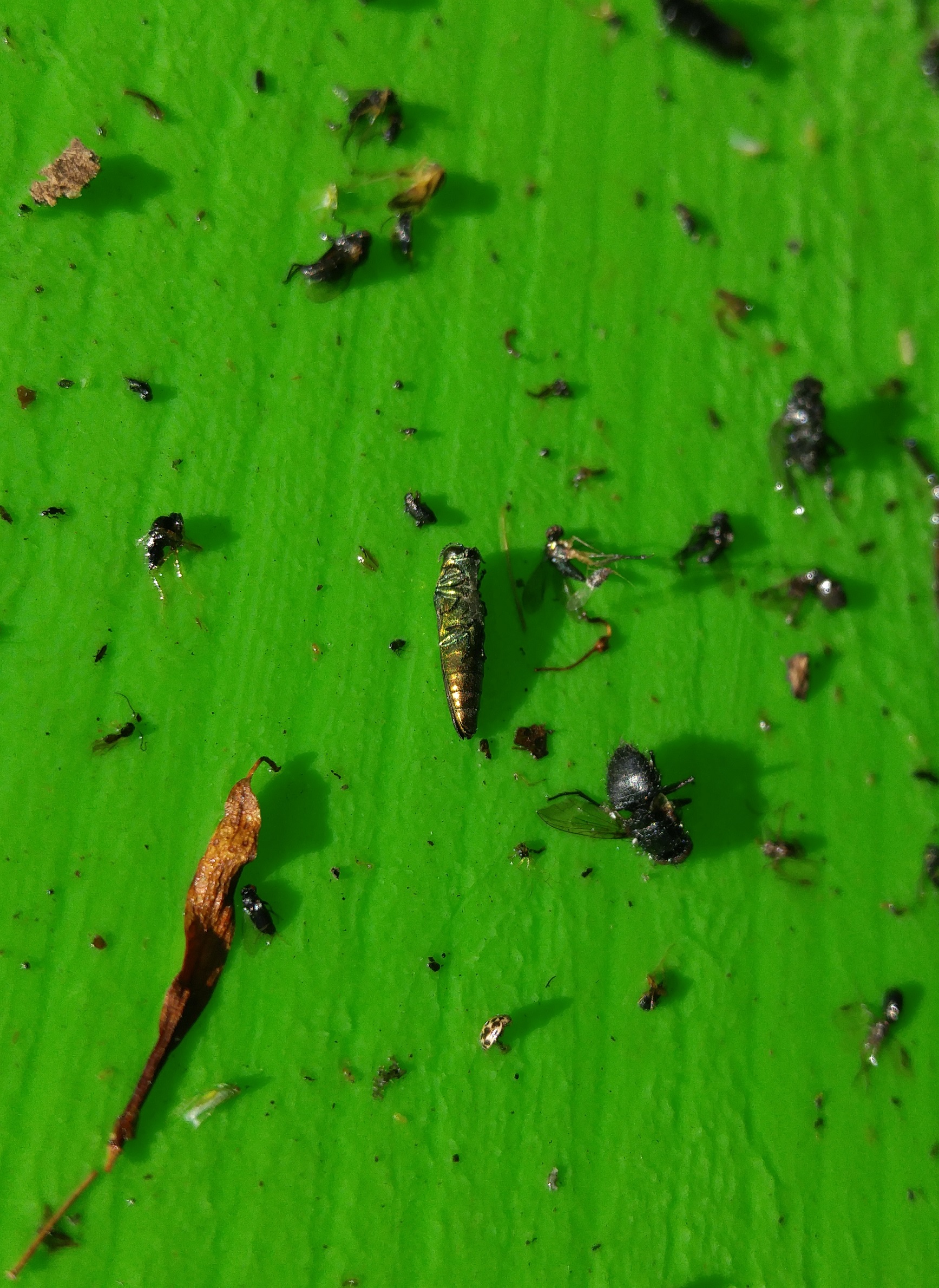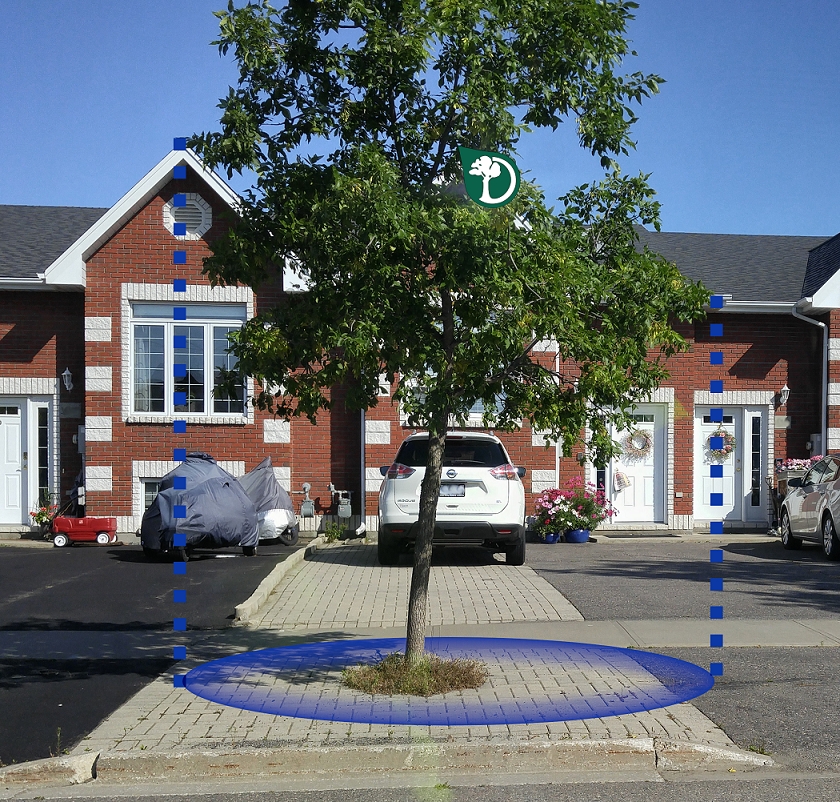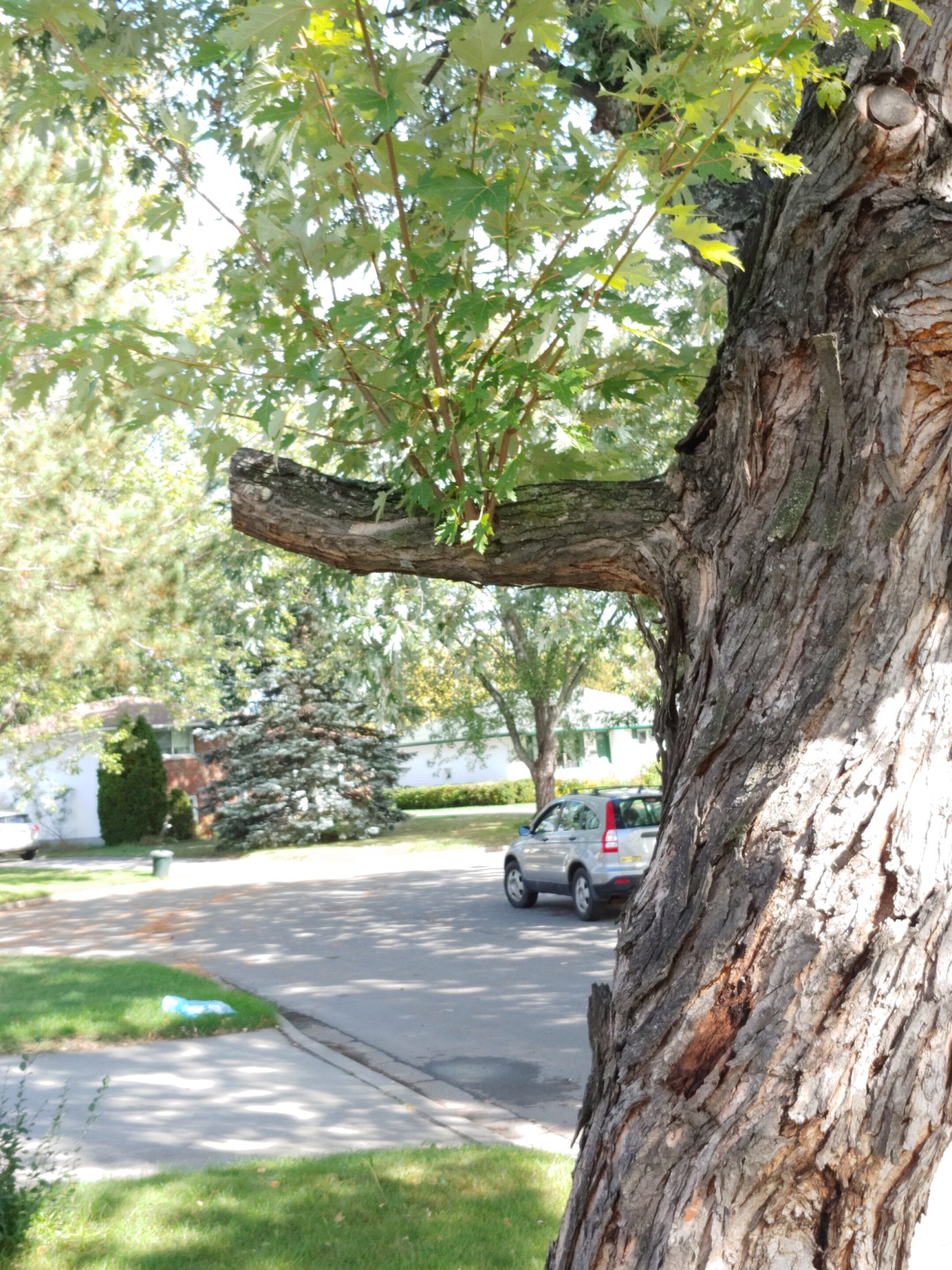Now that the emerald ash borer (Agrilus planipennis) has made its way east and has been detected as far east as Halifax, it has become more important to be conscious of what tree species you have AND what state their health is.
EAB targets species in the ash genus (Fraxinus) such as the native green ash (F. pensylvanica), white ash (F. americana), and black ash (F. nigra) especially, along with their cultivars that have been bred for planting. Though the insect attacks stressed trees primarily, healthy ones can be a target as well. Despite being an attractive beetle in the jewel beetle family (Buprestidae) it does significant damage to the important cambial tissue of the tree. This tissue is what conducts the transport of both carbohydrates, water, and nutrients from the crown to the roots and back. Disrupting this flow, even under the bark, amounts to girdling the tree, choking it, and causing what is called a physiological drought. All the watering and fertilizing in the world can’t help it once the column of transport is broken.
The life cycle is generally one year long and occurs as follows:
- Adult lays an egg during the summer
- Egg hatches and burrows into the cambium (the living tissue) of the tree under the bark and consumes the wood material into the fall
- The larva stays in this form over the winter
- It continues to consume cambial material until it pupates in April to July
- The adult emerges from the bark forming the D shaped exit-holes, with emergence forecasting done by BioForest
- The adult consumes tiny bits of the leaves but not in any significant amount
- The adults mate
- The process begins again
It is important to recognize that our native ash trees do not have any defenses against this pest. It originated in the far east of Asia and fed primarily on Mandchurian ash (F mandschurica) in its native range.
DripLine Analytics staff has experience in both maintaining a monitoring program of over 50 detection traps, assessing hundreds of ash trees for their health and structural quality, and performing actual pesticide injections on dozens of ash trees to kill any EAB larvae that were present in them using TreeAzin from BioForest.




